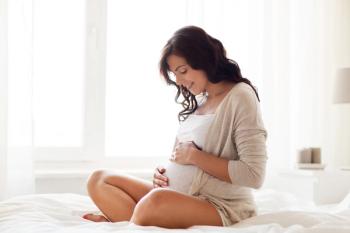
Uptake of NIPT lower in disadvantaged neighborhoods
Noninvasive prenatal testing (NIPT) uptake is significantly lower in socioeconomically disadvantaged neighborhoods compared to all other neighborhoods in the Netherlands, according to a study in the journal Prenatal Diagnosis.
The difference in uptake was smallest for the youngest maternal age group (less than or equal to 25 years) versus other age groups.
“In 2017, NIPT was introduced as a first-tier test for all pregnant women within our governmentally supported prenatal screening program, as part of the TRIDENT-2 study initiated by the Dutch NIPT Consortium, for which women pay 175 euros ($205 U.S. dollars),” said first author Karuna R. M. van der Meij, a PhD student in human genetics at Amsterdam University Medical Center (UMC) and Vrije Universiteit Amsterdam.
The inspiration for the study came from second author Caroline Kooij, who is a midwife in a socioeconomically disadvantaged neighborhood in Amsterdam. “She noticed in her neighborhood that new guidelines or innovations in maternity care often either do not meet the needs of pregnant women or women are unable to afford them,” van der Meij told Contemporary OB/GYN.
NIPT uptake, postal code, and the age of 156,562 pregnant women who received pretest counselling for prenatal screening in 2018 were retrieved from the national prenatal screening database. Postal codes were used to categorize neighborhoods as being either socioeconomically disadvantaged or other.
Roughly 10% of the women lived in socioeconomically disadvantaged areas.
NIPT uptake in socioeconomically disadvantaged neighborhoods was 20.3% compared to 47.6% in all other neighborhoods (P < .001).
“The uptake in socioeconomically disadvantaged neighborhoods is over 2 times lower in the Netherlands,” van der Meij said. “We were surprised by this large difference because the Netherlands is a country with a nationwide prenatal screening program.”
Because the Dutch Population Screening Act prohibits screening for untreatable disorders without a governmental license, there is no commercial screening in the Netherlands.
The study confirms findings from other high-income countries like Australia, the United Kingdom, and the United States where there are socioeconomic disparities in fetal aneuploidy screening uptake.
The study also found that women who chose NIPT had a significantly higher mean age than women who did not have NIPT: 31.5 vs. 29.4 years, respectively (P < .001).
Disparities in NIPT uptake undermine the goals of a national fetal aneuploidy screening program of providing reproductive autonomy and equitable access, according to van der Meij, along with ethical and policy implications for ensuring fair and responsible implementation of fetal aneuploidy screening.
The use of specialized tools, such as low-literacy decision aids, culturally competent audio/visual tools, value clarification exercises and additional group counselling could be used to support the counselling process and decrease inequalities in NIPT uptake, according to van der Meij. “Another option would be to offer NIPT free of charge or at a much lower price for women who cannot afford the procedure,” she said.
It has been proposed, however, that a modest financial barrier may encourage informed decision-making among pregnant women by promoting deliberation.
Meanwhile, the reasons for discrepancies in NIPT uptake rates remain unclear. “Research is needed to determine whether the out-of-pocket payment is a barrier for prenatal screening uptake, especially for women living in socioeconomically disadvantaged areas,” van der Meij said. “Other factors such as literacy, religion and culture might also play a role.”
__
__
Disclosure
Van der Meij reports no relevant financial disclosures.
Reference
Van der Meij KRM, Kooij C, Bekker MN, et al. Non-invasive prenatal test uptake in socioeconomically disadvantaged neighborhoods. Prenat Diagn. Published online September 9, 2021. doi:
Newsletter
Get the latest clinical updates, case studies, and expert commentary in obstetric and gynecologic care. Sign up now to stay informed.











